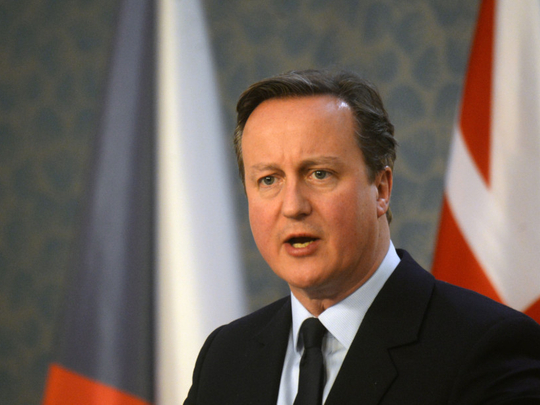
If British Prime Minister David Cameron seems in a hurry to hold his promised referendum on whether Britain stays in the European Union (EU) this summer, he should be. He is much more likely to lose if he waits until next year.
There are two reasons why questions of timing are likely to prove important for deciding Britain’s future in Europe — and perhaps as a result the nature and future of the bloc itself. The first is that, as I found when analysing the results from 43 EU referendums for a recent paper, these have tended to favour the EU cause when the governments calling the votes had been in office for a short time. The second is that lower voter turnout helps.
In Britain’s case, turnout will be lower if the vote is held during the summer (a number of reports suggest June is the target month and the deeper into the summer lull the better, for a pro-EU vote). Similarly, Cameron’s Conservative Party will be only a year into its electoral term. True, Cameron already ran a coalition government since 2010, but the longer he leaves the referendum, the more acute his disadvantage will be.
I calculate that if turnout is the same as it was for Cameron’s re-election last May (66 per cent), and he holds the referendum soon, he will squeeze through with 56 per cent in favour of staying in the EU. If he waits until next year and turnout is as high as it was for Scotland’s September 2014 referendum on independence (85 per cent), then the vote to stay will get only 49 per cent. In other words, he will lose. That level of turnout would be extraordinary, but not inconceivable, given the passion Europe arouses.
This probably explains why Cameron has seemed so keen to get a deal on reforming Europe with other EU leaders on February 18-19, at their next summit. If he fails to do so, he won’t be able to hold a vote this summer and the odds against him will begin to mount.
All of this is based on an equation I recently developed in an academic journal. Statisticians and economists often use econometric models to make forecasts, and the same kinds of equations can be developed for political events. The American political scientist Michael S. Lewis-Beck created a model that aimed to predict US presidential elections with a margin of plus or minus 2.5 per cent (I used it to predict President Barack Obama’s 2012 election victory). Using data from the results in all 43 referendums on the EU (and its previous incarnation, the European Economic Community) since 1972, we can come up with a similar equation.
My crunching of the referendum results produced three major factors to feed into the equation. The most powerful concerned the question on the ballot: All other things being equal, EU referendums tend to be won if there is a leading question. Voters tend to vote for government propositions if the question asked on the ballot includes so-called emotive words, such as do you “agree” or do you “approve”.
We already know what Britain’s referendum question will be, and it will be bland: “Should the United Kingdom remain a member of the European Union or leave the European Union? Leave/Stay.” That creates a zero value for the part of the equation that allows for emotive questions to influence the vote — so no help there for Cameron’s campaign to remain in the EU. The two remaining factors to feed in are turnout and the length of time the government has spent in office.
Of course, many other issues will affect the vote. But some that are often thought to be vital — such as campaign spending levels and control over the media — prove to have been statistically unimportant to EU referendums held around Europe to date. So why do turnout and the number of years for which the government has been in power matter more?
Governments break promises and disappoint if they have been in office for a long time, and that mood affects voters’ choices when they are asked to endorse the same government’s recommendations on Europe. In Denmark, for example, a conservative government had been in power for 10 years by the time it held a vote to approve the EU’s Maastricht Treaty, in 1992, contributing to the proposal’s rejection. A year later, a new government — headed by Social Democrat Prime Minister Poul Nyrup Rasmussen — was able to capitalise on the post-election honeymoon it was enjoying to win a re-run of the same vote. It was passage of the Maastricht Treaty that enabled the euro’s creation and formally established the EU.
That a high turnout should be correlated with a high ‘no’ vote is perhaps more surprising. With a turnout of 89 per cent, the Norwegian referendum on EU membership in 1994 was a case in point. Turnout for Norway’s parliamentary elections is normally lower (in 1993 it was 76 per cent), with voters more active in the capital Oslo, and less so in the countryside. But the salience of the EU issue meant that a larger number of voters from rural areas turned out. They were more sceptical and the result of the higher turnout was a ‘no’.
For all these reasons, Cameron and his officials would be well-advised to get their deal on reconfiguring Britain’s relationship with the EU sealed in February, and to hold the UK’s “Brexit” referendum as soon as possible. It may not be an inspiring comment on direct democracy, but the fewer citizens vote, and the less sick they have become of Cameron’s voice, the more likely he is to win.
— Bloomberg
Matt Qvortrup is a professor of political science and international relations at Coventry University.








